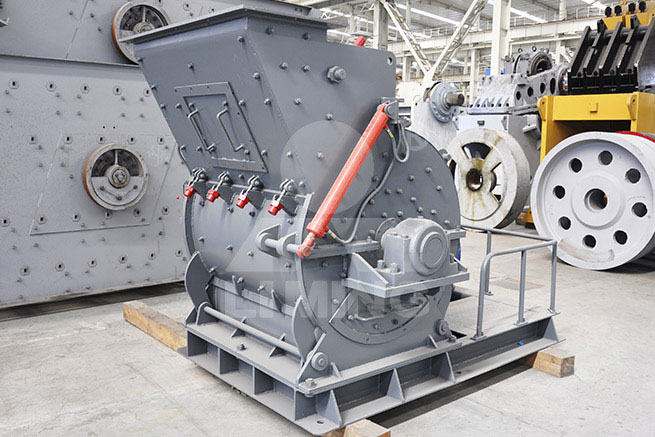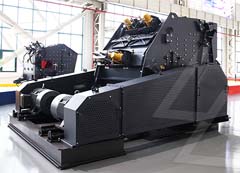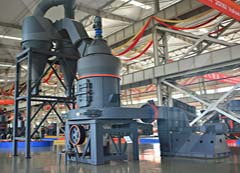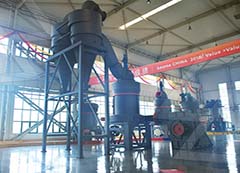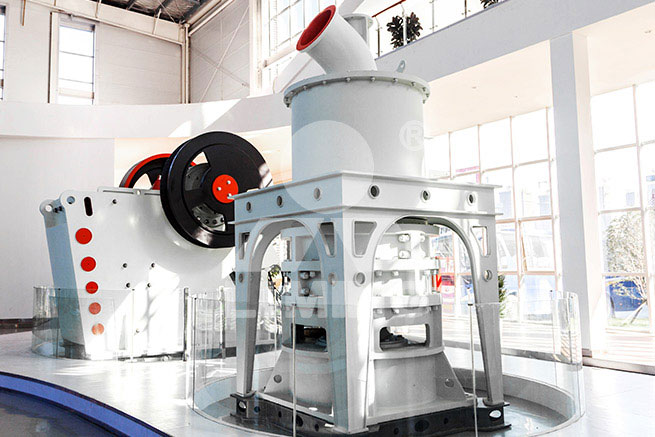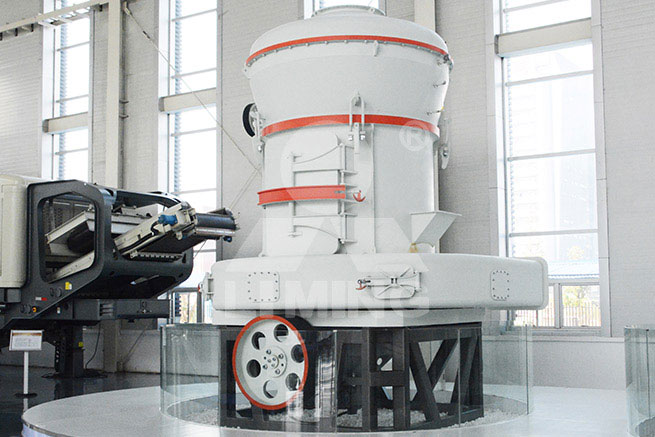air emissions from concrete batching plants

Concrete Batching Plants - EPD Front Page
2016-3-15 · 2.1 All emissions to air, other than steam or water vapour, shall be colourless, free from persistent mist or fume, and free from droplets. -2- 2.2 Emissions from non-fugitive fixed emission points in the specified and associated processes ... Where there is sufficient buffer area surrounding the concrete batching plant, ground stockpiling may ...
Read More

Reporting Emissions from Concrete Batch Plants
2022-2-9 · Reporting Emissions from Concrete Batch Plants . What to Report . Facilities with concrete batch plants should report all particulate matter (PM) primary and PM. 10. primary emissions from material handling, crushing and screening, silo loading, truck or
Read More

Guide to Air Quality Permitting for Concrete Batch Plants
Guide to Air Quality Permitting for Concrete Batch Plants 5 idling concrete haul trucks are not included in the TCEQ’s potential to emit calculations for concrete batch plants. Particulate emissions are a complex mixture of ex-tremely small particles and liquid droplets. Once inhaled, these particles can affect the heart and
Read More

Chapter 164: General Permit Regulation for Concrete
2021-6-25 · Plants that are subject to State air emissions standards. Owners and operators of Concrete Batch Plants may obtain specific regulatory coverage under this General Permit regulation in lieu of an individual air emission license if their facility qualifies as a minor source of air emissions. A Concrete Batch Plant
Read More

Concrete Batch, Asphalt Batch, and Rock and Aggregate
2019-7-26 · Community Air Quality Priority – Fugitive Dust, Particulate Matter (PM10) Emissions, and Odors The community of San Bernardino, Muscoy identified fugitive dust, particulate matter, and odors from concrete batch, asphalt batch, and
Read More

Potential To Emit Calculator for Concrete Batch Plants
2021-6-25 · Note: Emissions from vehicle traffic and storage piles are considered fugitive emissions and are not counted towards PTE, as concrete batching is not one of the 28 listed source categories. Potential To Emit Calculator for Concrete Batch Plants. 7/1/2016. Page 2 of 9
Read More

Emission Factor Documentation for AP-42 Section 11.12 ...
2015-9-10 · Emission Factor Documentation for AP-42 Section 11.12 Concrete Batching Office of Air Quality Planning and Standards Office of Air and Radiation
Read More

11.12 Concrete Batching - US EPA
2018-9-24 · e Emission factors were developed by using the AP-42 Section 13.2.4, Aggregate and Sand Transfer Emission Factors in conjunction with the ratio of aggregate and sand used in an average yard3 of concrete. The unit for these emission factors is kg of pollutant per Mg of aggregate and sand. f References 9, 10, and 14. The emission factor units are ...
Read More

air emissions from concrete batching plants
2022-1-19 · Concrete plant - Wikipedia. A concrete plant, also known as a batch plant or batching plant or a concrete batching plant, is equipment that combines various ingredients to form concrete. Some of these inputs include water, air, admixtures, sand, aggregate (rocks, gravel, etc.), fly ash, silica fume, slag, and cement. Concrete batch plants ...
Read More

Concrete Batching Plants: Air General Permit Example ...
2019-12-19 · in a separately issued air construction or air operation permit. If you are the owner or operator of an eligible facility comprising one or more concrete batching plants, you may register to use the air general permit under paragraph 62-210.310(5)(b), F.A.C., by following the
Read More

Concrete Batching Plants: Air General Permit Example ...
2019-12-19 · in a separately issued air construction or air operation permit. If you are the owner or operator of an eligible facility comprising one or more concrete batching plants, you may register to use the air general permit under paragraph 62-210.310(5)(b), F.A.C., by following the
Read More

Emission Factor Documentation for AP-42 Section 11.12 ...
2015-9-10 · Emission Factor Documentation for AP-42 Section 11.12 Concrete Batching Office of Air Quality Planning and Standards Office of Air and Radiation
Read More

air emissions from concrete batching plants
2022-1-19 · Concrete plant - Wikipedia. A concrete plant, also known as a batch plant or batching plant or a concrete batching plant, is equipment that combines various ingredients to form concrete. Some of these inputs include water, air, admixtures, sand, aggregate (rocks, gravel, etc.), fly ash, silica fume, slag, and cement. Concrete batch plants ...
Read More

Concrete Batch, Asphalt Batch, and Rock and Aggregate
2019-7-26 · Community Air Quality Priority – Fugitive Dust, Particulate Matter (PM10) Emissions, and Odors The community of San Bernardino, Muscoy identified fugitive dust, particulate matter, and odors from concrete batch, asphalt batch, and
Read More

[Characteristic of Particulate Emissions from Concrete ...
The results showed that: (1) the emissions of particulates from concrete batching showed a trend of "first increase and then decrease", reaching the maximum in 2005, and then decreased due to stricter emission standard and enhanced environmental management.
Read More

Air emission from the co-combustion of alternative
2018-6-5 · the formation and monitoring of particulate emissions (includ-ing total solid particulates, heavy metals, dioxins, and furans) during the co-combustion of ADFs within cement plants. Materials and Methodology Materials Analytical monitoring of flue gas from 10 cement batching plants (referenced A, B, C, up to J) was selected while they were
Read More

Hanson Eastern Creek Concrete Batching Plant Air
2019-8-27 · Materials Pty Ltd (Hanson) to undertake an air quality and greenhouse gas assessment for the proposed construction and operation of a concrete batching plant (CBP) at Wallgrove, Eastern Creek, NSW. As part of the proposal, an Environmental Impact Statement (EIS) including an air quality and greenhouse gas assessment is required.
Read More

Emission Estimation Technique Manual
Concrete batching plants store, convey, measure, and discharge concrete constituents into concrete mixers for transport to the job site. The raw materials can be delivered to a batching plant by road or by rail, and are then transferred to elevated storage silos pneumatically, or by bucket elevator. The sand and coarse aggregate are
Read More

Environmental Guidelines for Concrete Batching Plants
2020-9-20 · Concrete batching plants must be located in an area where they will not pose a hazard to the environment or the amenity of the local community. Highly alkaline wastewater, dust emissions and noise are the key potential impacts associated with concrete batching plants.
Read More

Concrete Batch, Asphalt Batch, and Rock and Aggregate
2019-7-26 · Community Air Quality Priority – Fugitive Dust, Particulate Matter (PM10) Emissions, and Odors The community of San Bernardino, Muscoy identified fugitive dust, particulate matter, and odors from concrete batch, asphalt batch, and
Read More

Emission Factor Documentation for AP-42 Section 11.12 ...
2015-9-10 · Emission Factor Documentation for AP-42 Section 11.12 Concrete Batching Office of Air Quality Planning and Standards Office of Air and Radiation
Read More

[Characteristic of Particulate Emissions from Concrete ...
The results showed that: (1) the emissions of particulates from concrete batching showed a trend of "first increase and then decrease", reaching the maximum in 2005, and then decreased due to stricter emission standard and enhanced environmental management.
Read More

Concrete Batching | Georgia EPD
2019-7-29 · Concrete batching produces dusts consisting mainly of cement and other powdery solid constituents. Such dusts are regulated as an air pollutant called particulate matter” or “ PM. There are two types of PM emissions from concrete batching. Point/stack PM emission
Read More

Emission Estimation Technique Manual
Concrete batching plants store, convey, measure, and discharge concrete constituents into concrete mixers for transport to the job site. The raw materials can be delivered to a batching plant by road or by rail, and are then transferred to elevated storage silos pneumatically, or by bucket elevator. The sand and coarse aggregate are
Read More

Concrete Batching Plants: Air General Permit Example ...
2019-12-19 · in a separately issued air construction or air operation permit. If you are the owner or operator of an eligible facility comprising one or more concrete batching plants, you may register to use the air general permit under paragraph 62-210.310(5)(b), F.A.C., by following the
Read More

Environmental Guidelines for Concrete Batching Plants
2020-9-20 · Concrete batching plants must be located in an area where they will not pose a hazard to the environment or the amenity of the local community. Highly alkaline wastewater, dust emissions and noise are the key potential impacts associated with concrete batching plants.
Read More

Hanson Eastern Creek Concrete Batching Plant Air
2019-8-27 · Materials Pty Ltd (Hanson) to undertake an air quality and greenhouse gas assessment for the proposed construction and operation of a concrete batching plant (CBP) at Wallgrove, Eastern Creek, NSW. As part of the proposal, an Environmental Impact Statement (EIS) including an air quality and greenhouse gas assessment is required.
Read More

air emissions from concrete batching plants articles of ...
2022-1-22 · Facebook page opens in new window Linkedin page opens in new window Twitter page opens in new window Instagram page opens in new window
Read More

Concrete Batching - an overview | ScienceDirect Topics
Concrete batching is generally conducted at plants located at various strategic positions around a city or town to minimize transport time. Raw materials are mixed in elevated bins and placed directly into concrete trucks for final transport. This process is primarily powered by electricity, with small amounts of other fuels used on each site by small excavators used to move raw
Read More
- << Previous:Agua Mineral De La Planta De Agua Mineral
- >> Next:Algeria Limestone Grinding Mill


